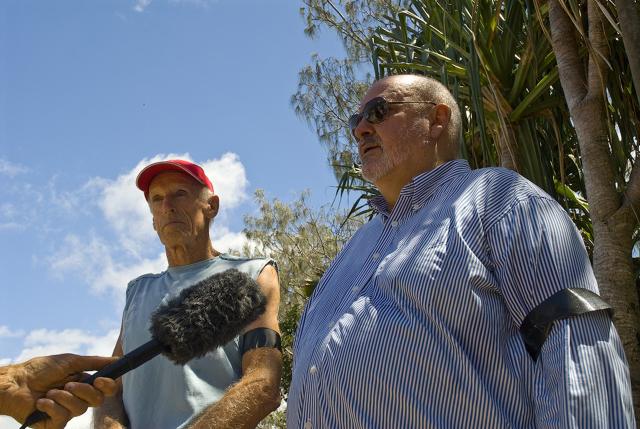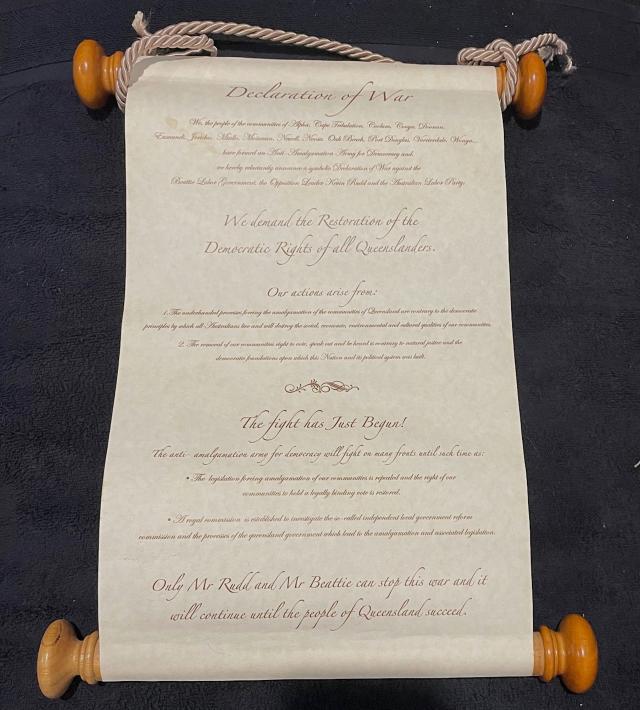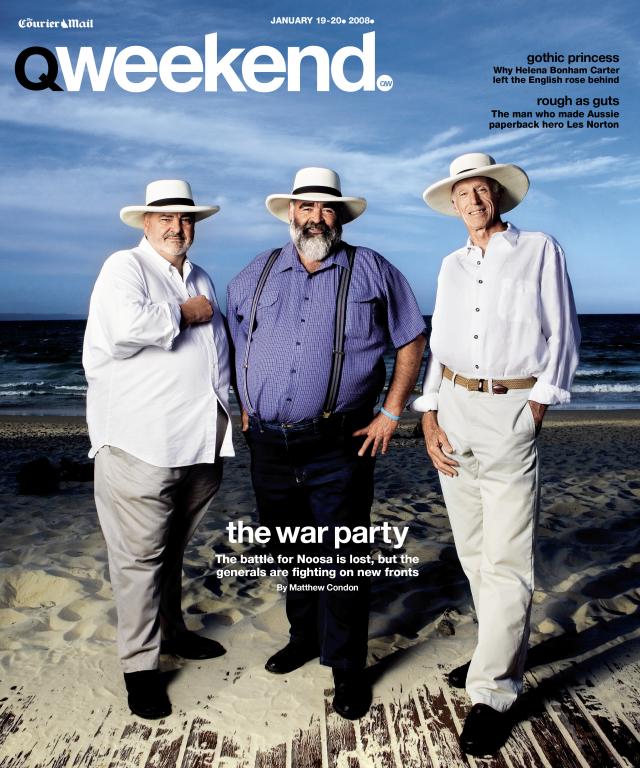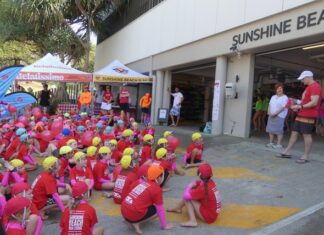“It might just be the strangest war cabinet in the history of conflict.
One whose generals wear Michelin hats, and the lieutenants a uniform of fetching cream linen. And when the foot soldiers join the chow line at base camp in this little skirmish, forget bully beef and powdered eggs — they can expect tuna tartare and wagyu carpaccio in their tin pannikins.”
– Matthew Condon, Courier-Mail Weekend, 19–20 January 2008
Just after dawn on 18 April 2007, a typically balmy, mid-autumn Noosa morning, former business titan Bob Ansett slipped into his running gear and, following the daily routine he’d established more than a decade earlier when he and wife Josie retired to their beach house, switched on the kitchen radio and made coffee while he carefully stretched his calves and thighs.
The volume was low for Josie’s sake, but Ansett suddenly did a double-take when he realised the ABC announcer was talking about a local government reform commission for Queensland. He flicked the dial up a notch and gave the broadcast his fullest attention while he sipped his coffee. By the time he left the house for his seven-kilometre run through the Noosa National Park to Main Beach, he was very, very angry.
On the previous afternoon Queensland’s Labor government had announced a local government reform commission to investigate widespread amalgamations of regional councils, with Noosa high on its hit list.
The idea of a Sunshine Coast “super council” had been mooted for decades, usually whenever Noosa Shire Council acted to constrain unchecked development and control growth to maintain a sustainable environment. Then-premier Frank Nicklin had supported it in the 1960s, and in the early 1980s, Bjelke-Petersen’s “minister for everything”, Russ Hinze, was positively gung ho about it. Seen from the outside, local government mergers can seem like sensible economic and social decisions, such as when a rural shire merges with its main service town, as in Widgee Shire and the city of Gympie merging in 1993.
But, as former Noosa Shire Council chief executive officer Brett de Chastel explained: “Amalgamations are successful where there is a set of common values or a shared sense of place. The Noosa and Sunshine Coast amalgamation never had that.”
On the morning of 18 April, as he sipped his post-exercise coffee at Café le Monde’s “table of knowledge”, Bob Ansett felt that Noosa was about to begin the fight of its life, and he had a strong sense of foreboding about it. But he’d been a fighter all his life, and he had plenty of allies. He only had to look across the table to know that. And in the restaurant just above them, the big and brash New Yorker, Jim Berardo, would be thrashing around, issuing orders for the day to his restaurant staff in between obscene sprays about Premier Beattie’s duplicity. These were strange bedfellows indeed, but they were fighters, and they were accustomed to winning.
Arguably the most important early development in the fight was the establishment of an organisation called Friends of Noosa (FON), which came out of a meeting called by Noosa Mayor Bob Abbot, with most of the more vocal opponents of amalgamation present. Although they’d had a nodding acquaintanceship since his arrival in town in the ‘90s, Jim Berardo and Bob Ansett weren’t friends and their personal styles were quite different, but Ansett admired Berardo’s fierce commitment to stopping an injustice, and agreed to join the board of Friends of Noosa (FON) under his presidency, with both men providing the public face of the defence organisation.
On 27 July, the Local Government Electoral and Boundaries Review Commission recommended a program of compulsory amalgamation that would reduce the number of local councils in Queensland from 157 to 73. On the Sunshine Coast, their recommendation was that Caloundra, Maroochy and Noosa councils amalgamate to form a Sunshine Coast regional council. On 3 August, FON, along with Noosa Parks Association and other community organisations, marched on Parliament House to protest the amalgamations. More than 10,000 people turned out, the vast majority of them from Noosa, having arrived in buses organised by Noosa council.
On the steps of Parliament House, Bob Abbot, who had been suffering from a kidney infection and checked himself out of hospital against doctor’s orders, whipped the crowd into a frenzy of righteous indignation and called on the government to take note of the will of the people. He then staggered back into the crowd, supported by his old colleague, former Noosa mayor Noel Playford.
On the issue of amalgamation, the two mayors were determinedly back to back, but it was too little too late, and the recommendations of the commission were passed into law amid great acrimony around the corridors of power in George Street, Brisbane, in the early hours of 10 August.
Former media executive Glen Elmes had won the seat of Noosa for the Liberals at the state elections in September 2006. He’d been in the House not quite a year.
He recalls: “I was absolutely opposed to it. There were some councils where it worked but it didn’t fit Noosa. My colleagues in the Parliament were behind me all the way, so we started organising against it.”
Just before the dinner adjournment on 9 August, Elmes rose to speak against the Local Government Reform Implementation Bill: “This bill represents tyranny in its operation and the destruction of Noosa in its performance.”
It was a powerful speech, which in some ways defined Elmes’ stance on Noosa throughout his political career, but it fell on deaf ears because Beattie had the numbers. There were many in the House on both sides of the chamber who felt that it was a lost cause, that the Noosa elite should just suck it up and start living in the real world.
But they didn’t understand the strength of commitment felt across the community. The battle lines had been drawn.
A few days after the Bill was passed, Glen Elmes and Jim Berardo stood on the steps of Parliament House in front of a media scrum and read a “declaration of war” from a scroll. As media stunts go, this probably wasn’t their best work, but the declaration of war on the Queensland Labor government was deadly serious. The rationale was that Labor had been talking about this for years and wouldn’t give it up despite the clear and expressed will of more than 80 per cent of the Noosa population to remain an autonomous local council.
Regardless of political leanings, there was a growing belief that there was no point in trying to press the case with a government that had been in power for too long and many believed had lost touch with the people.
It was time to go to a higher authority.
Parts of this article were extracted from Place of Shadows, by Phil Jarratt (Boolarong Press, 2021), available from philjarratt.com










